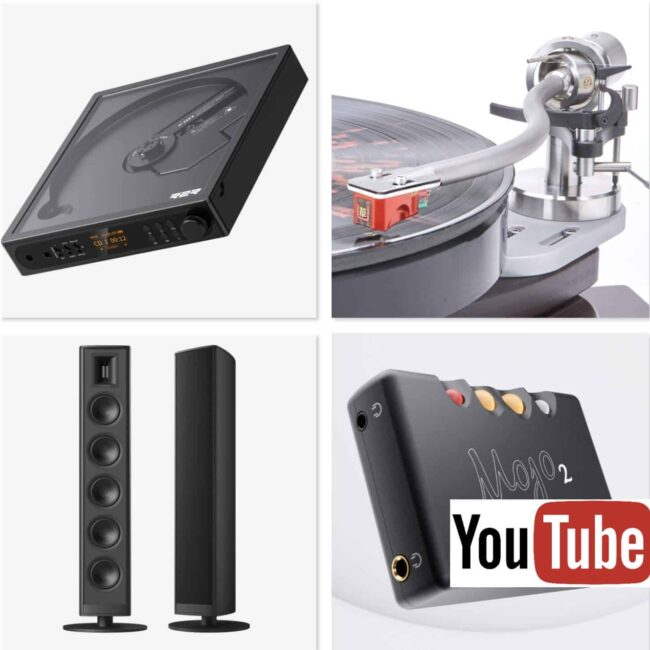The Article
MAGNI HEADPHONES AMP/DAC FROM SCHIIT
3rd June 2024
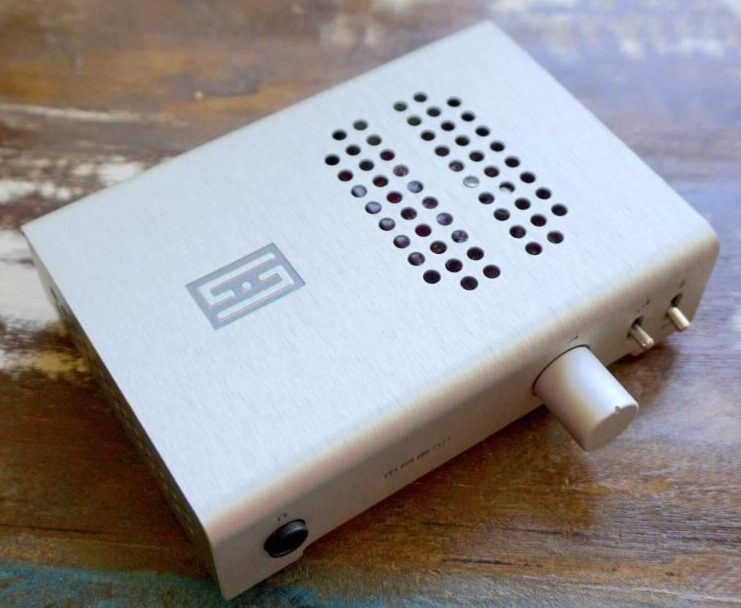
Compact and mainly aimed at desktop use (but there’s options, as you will see), Paul Rigby cuddles up to the cute and compact Magni
Or Mango as my spellchecker insists I call it. And you know what? I actually prefer the Mango as a name but that’s a whole other IP conversation.
Looking at the company blurb about this low-cost unit and scanning the Internet, there’s a lot of information out there. And at the same time? There isn’t.
What we know is that the Magni arrives in two flavours. One with a built-in DAC (£237, $189 or €289) and one without (£142, $119 or €175).
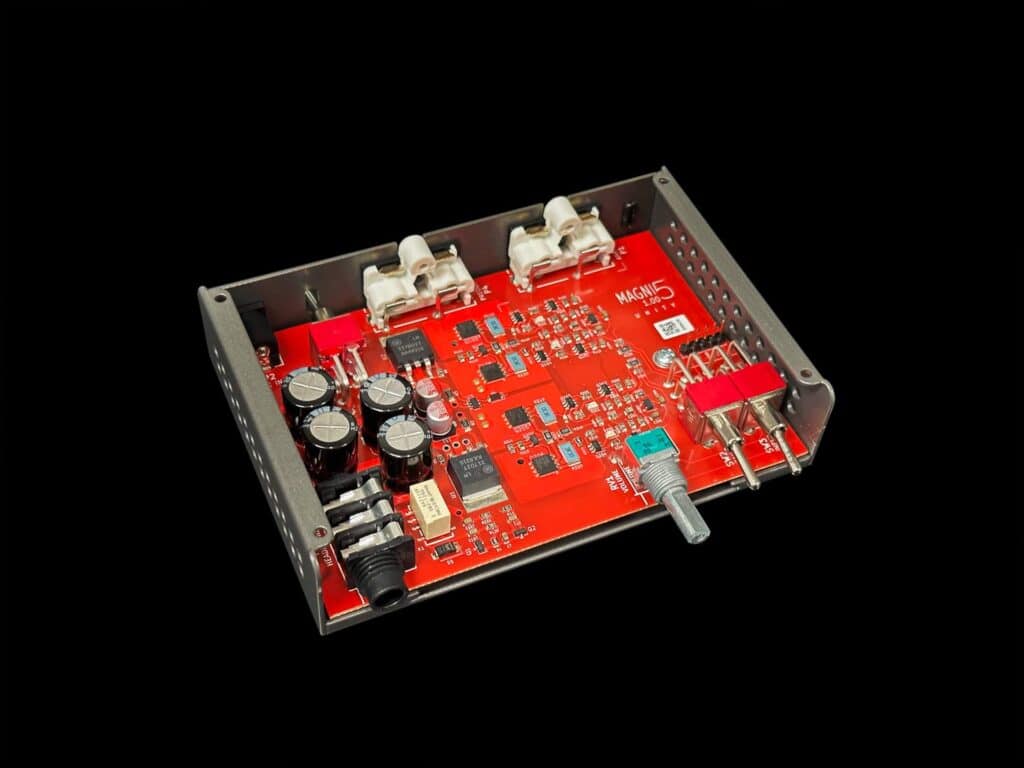
That built in DAC? I’ve had a quick scout on the Internet and YouTube and the company website of course and I’m still confused. Maybe I’ve managed to miss it if it is there but, even so, this is what I’ve found.
Inside then is an optional internal Unison USB DAC card, this is a bespoke board, built by the company itself. Ordinarily, in its standard form, this is a board that you can buy to upgrade your kit or older DACs and that retails, normally, for £180, $150 or €200. But that makes no sense here in price terms.
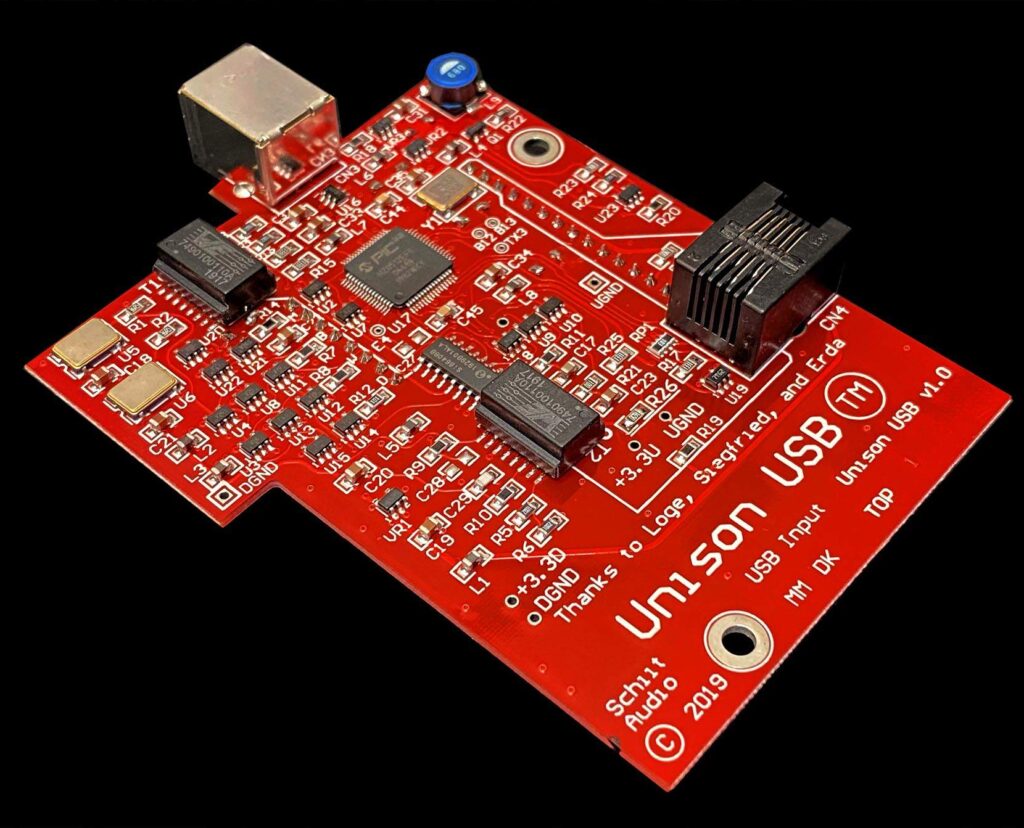
What I mean is, buy a £142 Magni head amp, then upgrade it with a £180 DAC board (so that’s a total of £322 in retail price terms) but here? You only pay £237 for the Magni plus the Unison DAC? That is, you only pay an extra £95, not £180.
SO WHAT IS GOING ON?
What I’m hearing is this, inside this Magni, you get a re-worked, simplified, cut-down version of the Unison board. You get the essentials and no more. I think the amount of sockets is reduced, saving cash. That reduces the price below the retail price of the full Unison board and allows Magni owners to basically grab a bargain DAC board. It’s not the same thing as a full blown Unison board but it essentially offers the same results.
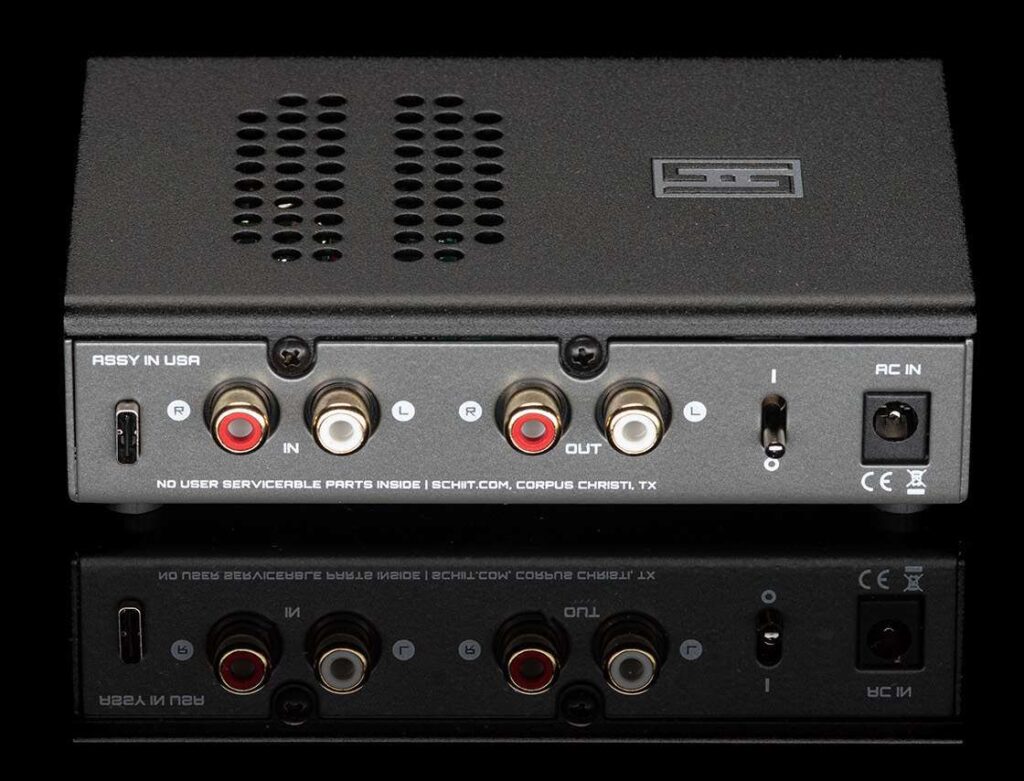
And that’s another thing that I have had trouble learning about, what is the basic spec of this DAC board? The nearest I get from the company, is the quoted and slightly woolly “Precision local clocks for both 44.1 and 48k multiples” statement. To me then, that hints that this DAC board supports 16bit/48kHz PCM. Instead, after more digging, I think you’re getting a 24bit/192kHz spec here.
What I think you’re not getting is DSD, No MQA, either. But don’t get upset by those figures, you’re getting a £180 DAC board for £95 as it is. Be grateful you’re getting a head amp and DAC board together for such a low price, says I.
TECH TALK
One thing the company doesn’t like to do is pigeon hole its products and force labels onto them and that continues here. Let me say this now, the Magni is essentially a desktop unit, as opposed to a full HiFi system unit (but see the Sound Quality tests for more on this). Sure, you can use it at home in a HiFi chain, which is why there’s no label to say ‘this box is for you to do THIS and THIS only’ but I would say it’s designed and aimed at desktop computer use.
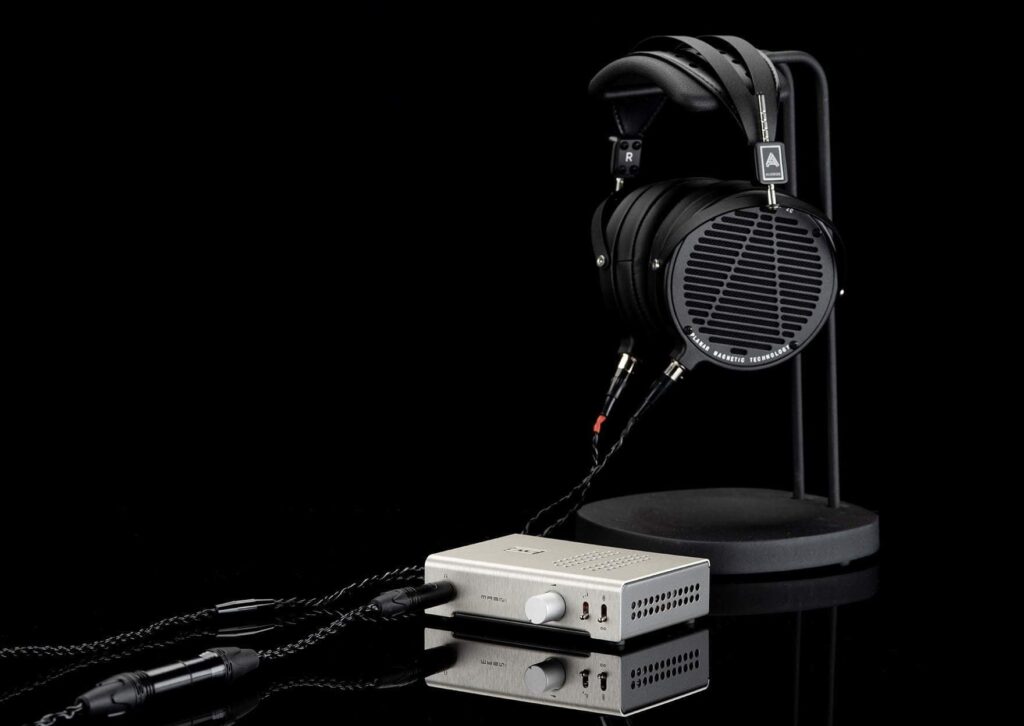
OK that desktop can be a table in Starbucks and the computer can be your laptop but you see what I mean here? This box would also be ideal for an office, by the way. Its dinky enough. Imagine, you bring the Magni into work with your favourite headphones. During the day, you hook the box to your computer. End of the day, you pull out the leads, drop the box and headphones into a draw and lock the drawer ready for the next day. This box is small enough to do that, as I say.
But the Magni would serve well on a desktop at home of course and the footprint is small enough for those living in cramped conditions, a small flat/apartment bedsit environment.
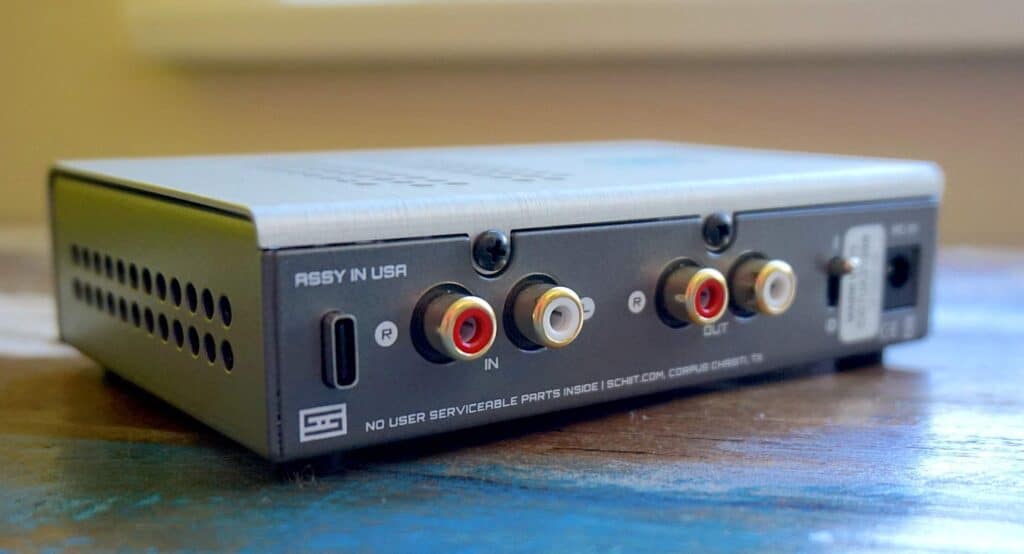
That intention is supported by the mere 127 x 89 x 318mm in size and a weight of 0.45kg.
It also helps – for that size ambition – when your power supply is external. I like external. HiFi likes external, it lowers noise, lowers vibration, removes microphony, improves sound quality.
External. It’s the new black.
The Magni includes a linear power supply in the shape of a wall wart. For the price? This is a decent option.
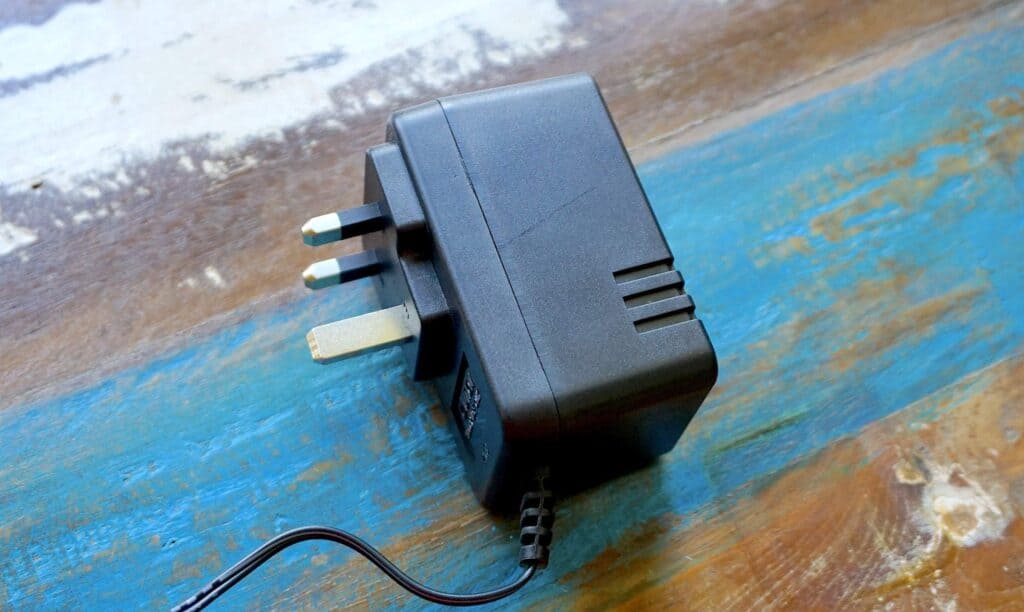
There is a heap of information about warranties and power supply specs and all of that, if you’re really interested? I’ll put a link above and you can knock yourself out but let’s keep to the essentials. For example, what’s going on around the back of this box?
THE MAGNI IS BACK
Let’s start on the far left and the only indication that this chassis holds a DAC. You can see a USB-C port. No DAC? There’s apparently a plastic plug only to fill the gap but I don’t have that version here so cannot confirm. To the right, a pair of inputs and a pair of outputs and as we keep on rolling to the right? A power switch and barrel plug power socket ends our tour.
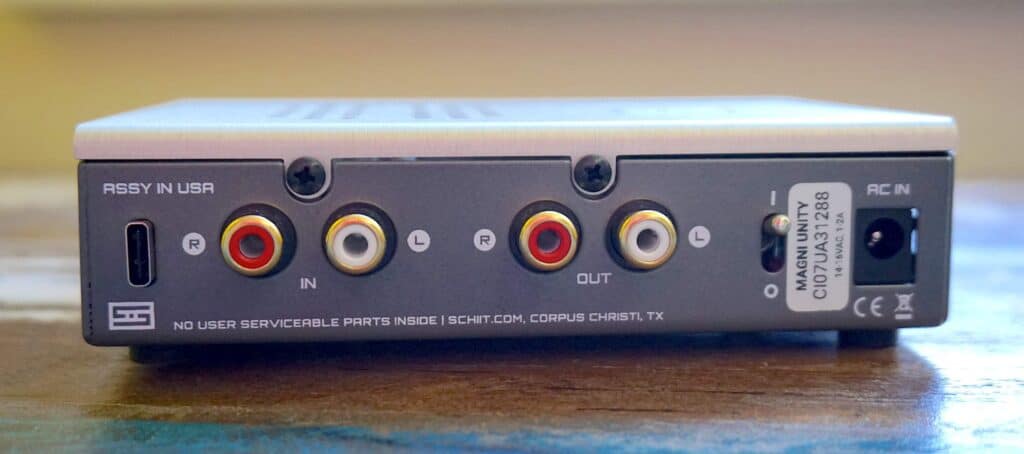
Around the front? Big thumbs up for the 6.35mm headphone socket. A smaller socket would have been understandable but the 6.35mm option tells me that this box is serious about sound. And that intention continues, folks because we have a gain control for your volume concerns. An ALPS model, to be specific. Let me say now that ALPS is a sign of quality. Let me emphasise that. The Magni is low cost but it ain’t cheap.
To the right of the ALPS are two toggle switches. I love toggle switches. The world needs more toggle switches! And VU meters for that matter but that’s a different bucket of resistors.
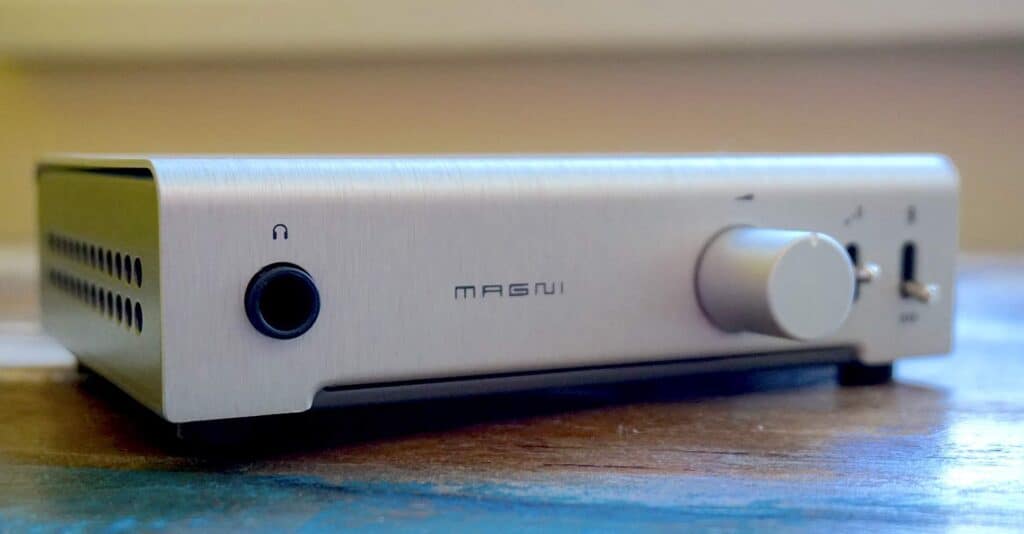
First of those toggles is a gain switch, I would guess mainly for IEMs (-10db) plus 0db and +15db. To the right of that is an input switch to move from RCA to the DAC card.
And that’s it for your tech. Question is, how does the Mango – I mean Magni – sound?
SOUND QUALITY
To begin the review, I wanted to put this box into context so I compared it to an expensive head amp. A waste of time, surely? I think not. With an ‘unfair’ comparison against a top performing, expensive unit, you often find out where the cheaper unit falls down, where it tries hard and where it performs above expectations.
vs ICON AUDIO HP8 MK.II
So I brought in my £1,000 of valve-based Icon Audio HP8 Mk.II and played the Japanese pressing of David Paton’s solo work, Blue Yonder on CD. Paton was the lead singer for the 70s pop band, Pilot and bass player for all 10 albums of the Alan Parsons Project prog band…and the first four albums from Kate Bush for that matter, sung with Paul McCartney, Camel, Elton John and so on.
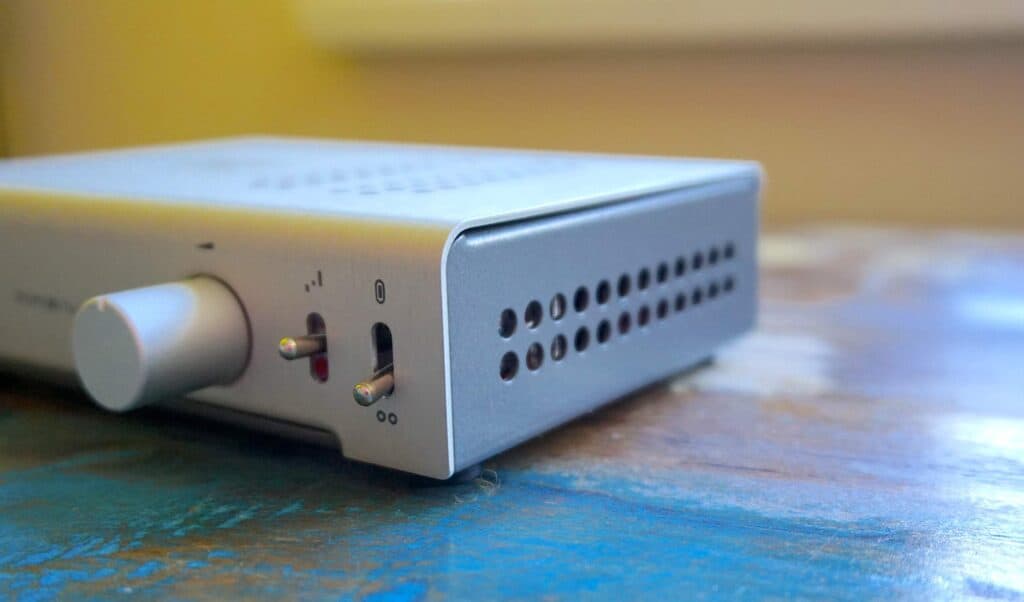
Plugging in my Sennheiser HD800 headphones, keeping the gain at 0db, I played the track One Good Reason Why, a richly-produced, slow-paced rock piece with drums, acoustic and delicious electric guitar, synths, lead and backing harmonies.
Was the HP8 MK.II better than the Magni? Absolutely, of course it was, the soundstage was larger and broader, the mids scooped up more detail, bass was more focused. All of that but…but the Magni produced a surprisingly clear soundstage for the price. That surprised me. It was full of air and space that helped to push detail to the ear. And that’s was the surprise, that’s where the Magni excelled here.

In general terms the Magni offered a balanced and neutral performance, full of frequency discipline and control so nothing sounded ‘off’, no boomy bass, no pinched treble or edgy mids here. In short, the little ol’Magni did not embarrass itself in expensive company. That is, if I didn’t have the HP8 Mk.II as my daily driver, I would be more than happy to use the Magni instead.
AS AN EXTERNAL HiFi AMP
But look, let’s get to the nitty gritty. We’ll get to the deck-based performance in a second. Let me first ask the question, is there any point in using this box in a good quality HiFi system? Many people would say no but I would disagree.
Remember earlier when I saying that the external power supply for the Magni is a good thing? External anything is a good thing, let me repeat, for HiFi systems. That includes headphone amps. So, if you run an integrated amplifier with a built in headphone amplifier, consider this unit as a possible, low-cost upgrade. And I did that.
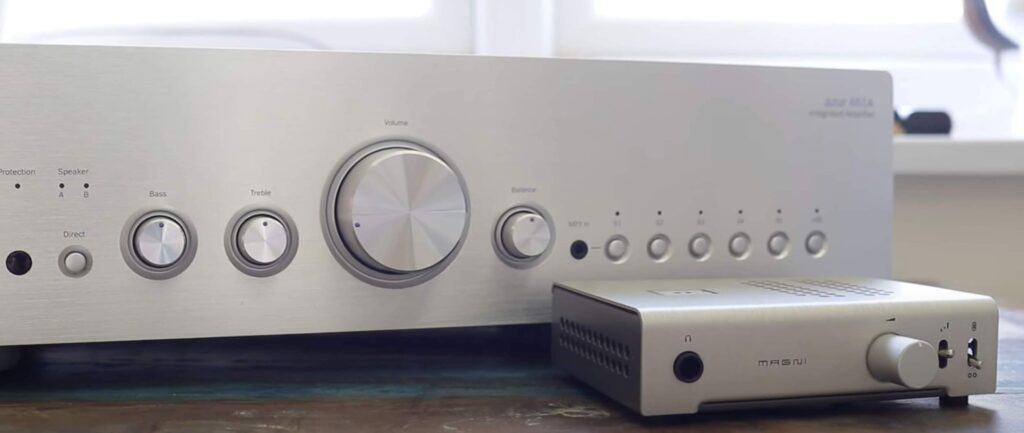
I have an old Cambridge 651A integrated amplifier here which would have retailed at £450 when new and it still performs well. It also includes a built in head amp. I hooked that to my Audiolab 6000CDT and Benchmark DAC.
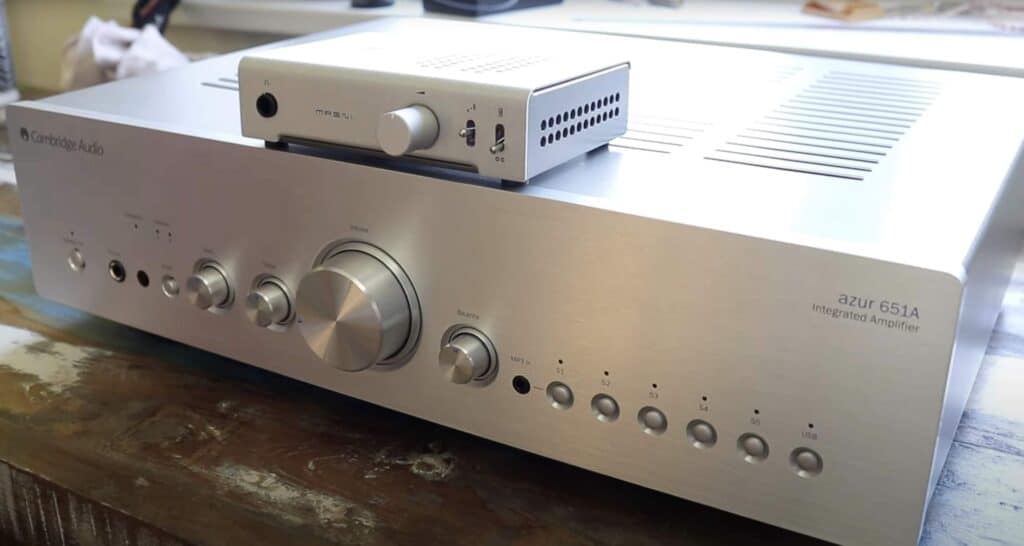
Comparing that Cambridge built in head amp unit with the Magni, the Magni offered a much lower noise performance. It sounded calmer, at ease and chilled. As if the performers were in control and confident. The entire midrange suite of frequencies experienced a boosted clarity, tonal accuracy was also higher while the balanced output was absolute now. The built-in Cambridge unit was a little tense by comparison, not really edgy but even so, slightly compressed, perhaps? The output from the Magni was a pleasant experience and listening fatigue was far lower with the Magni because of that.
COMPUTER USE
I then moved to my desk and hooked my Sendy Aiva headphones to the Magni and the Magni to my iMac via a basic, cheap-as-chips USB cable, switched the source to DAC and played a quite sublime version of On the Sunny Side of the Street by Sonny Rollins, Sonny Stitt and Dizzy Gillespie at 16bit/44.1kHz. Possibly my favourite ever jazz track.
For the price – and this unit is all about the price, price is the headline shot here – this head amp and DAC combo sounded excellent. Could it sound better? Yes it could but you would need to spend to get there.
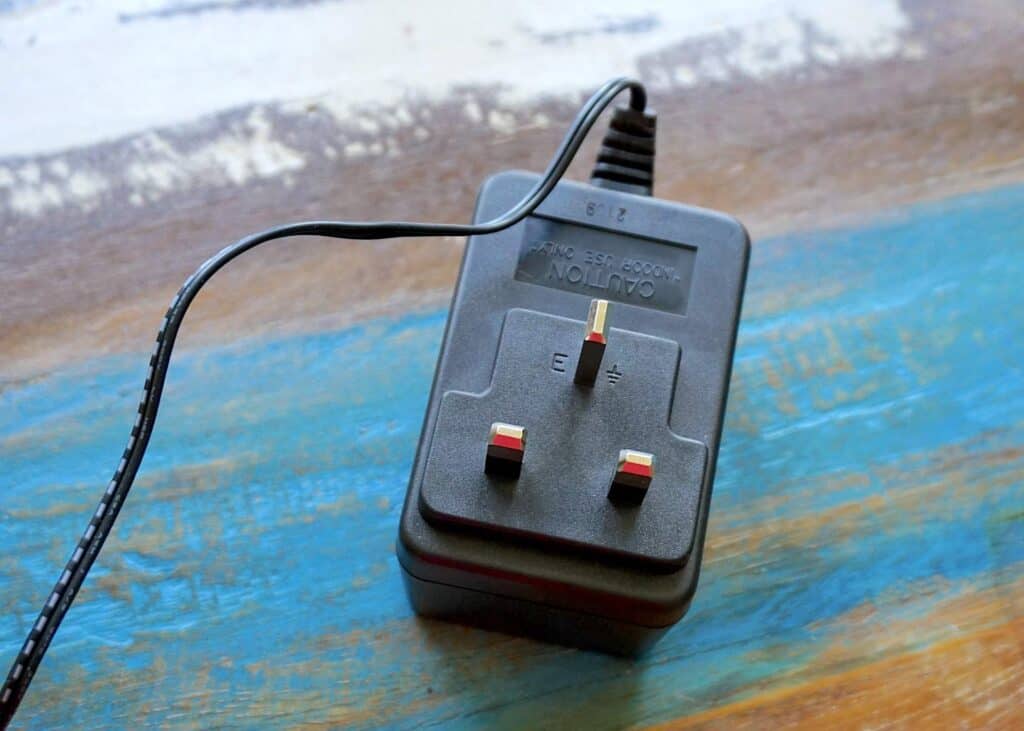
If I was being harsh? The mids sounded a little thin and strained during crescendos or when the sax hit the frequency heights, bass could be a touch larger, heavier, weightier perhaps and treble could have been a little more extended. But really? I’m being picky here. Super picky. What the Magni provided, as a desktop unit, was a balanced, output full of midrange insight, those saxophones had a distinctly reedy presentation, piano was dynamic, drums were rhythmic and full of swing. There was a host of detail on offer.
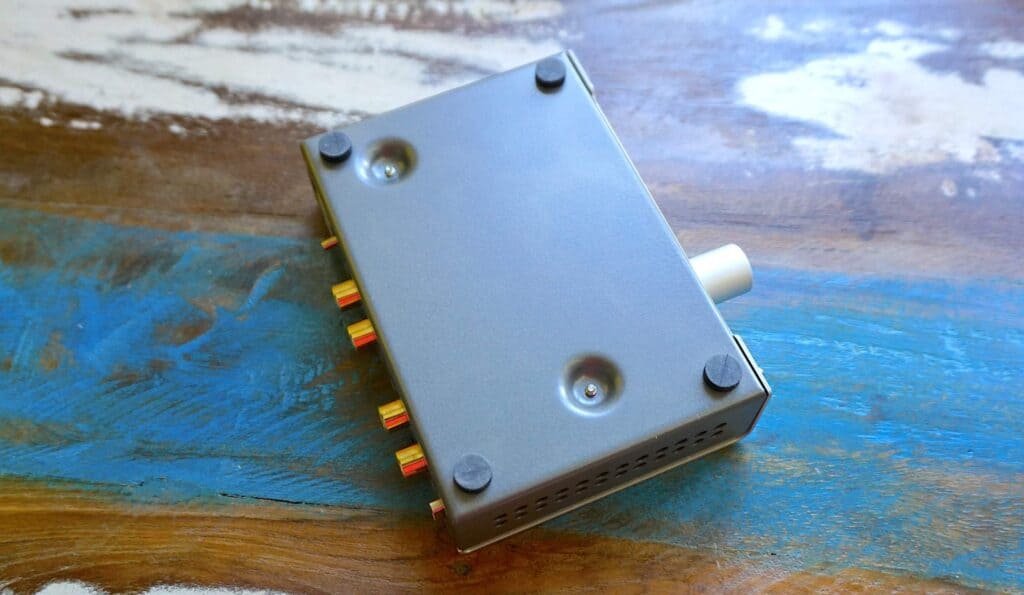
Even so. Even so. If I could suggest an upgrade from this particular Magni? The head amp and DAC, two-in-one Magni? It’s this.
UPGRADE – ADDING AN EXTERNAL DAC
Buy the Magni without the DAC, grab a decent pair of interconnects and then buy a quality external DAC such as the Topping E30 I have here which I’ve seen for various prices but let’s say £150? Grab a pair of QED interconnects at what, again lots of prices, let’s say £40, grab a decent USB cable too while you are there but essentially that’s £190 plus the bare Magni with no board at £142. So £332 in total then or – and this is not exact because I haven’t done the conversions but somewhere around $309 or €365 (give or take…ish) and your sound quality will shoot up. Why? Well, it’s that external thing again, I mentioned that earlier talking about the Magni’s power supply? Isolation, it lowers noise, vibration, stops microphony, it improves sound quality, all that.
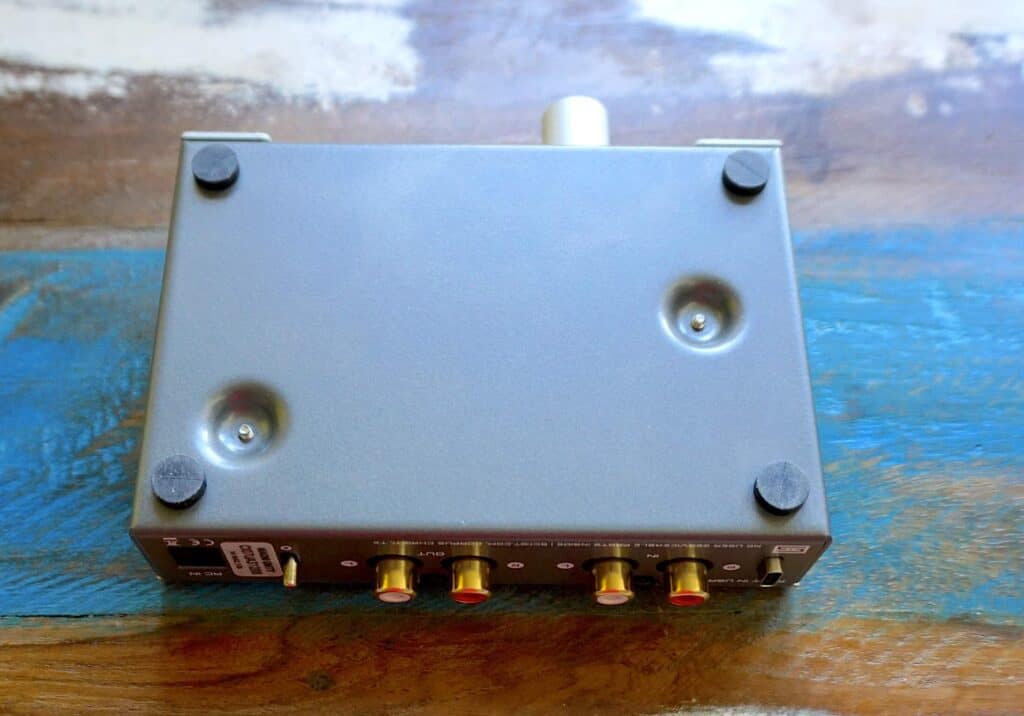
Same reason why the Magni sounded better than the built in head amp on the Cambridge amp. Same thing.
Of course, you can go the other way, buy the Magni with the built-in DAC and still upgrade to the external DAC later on. Either way is a ‘good thing’.
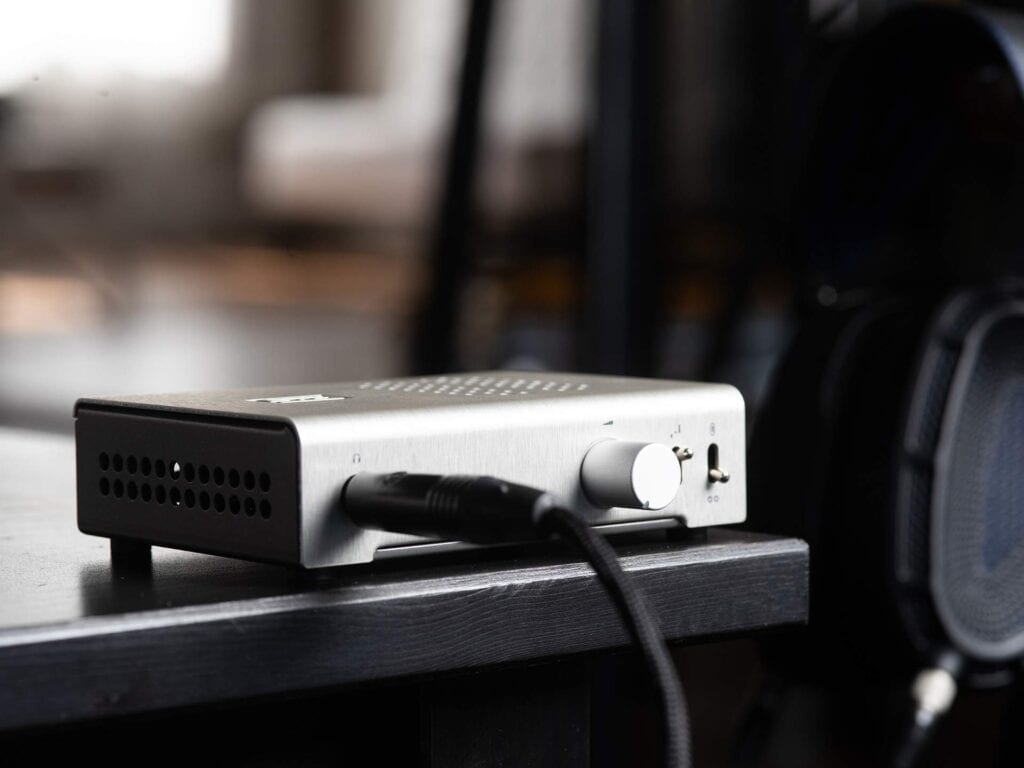
The Magni plus Topping E30 and QED cabling presented a midrange that presented much more basic information. That piano was complex and tonally more accurate now, saxes had a full, rich delivery, bass was deeper and more focused. The Magni and E30 combo took the sound up a rung in the sonic ladder. Of course, the downside is that extra price plus a larger footprint. You’re now looking two boxes, not one plus a set of cables to worry about but the choice is at least there for you to make and at least the Magni gives you those choices.
CONCLUSION
As you can see the sheer amount of flexibility from the Magni, for such a dinky, low cost product, is a reason to notice the thing in the first place. Add to that the excellent basic sound quality from this box, then you’ve got yourself a winner.
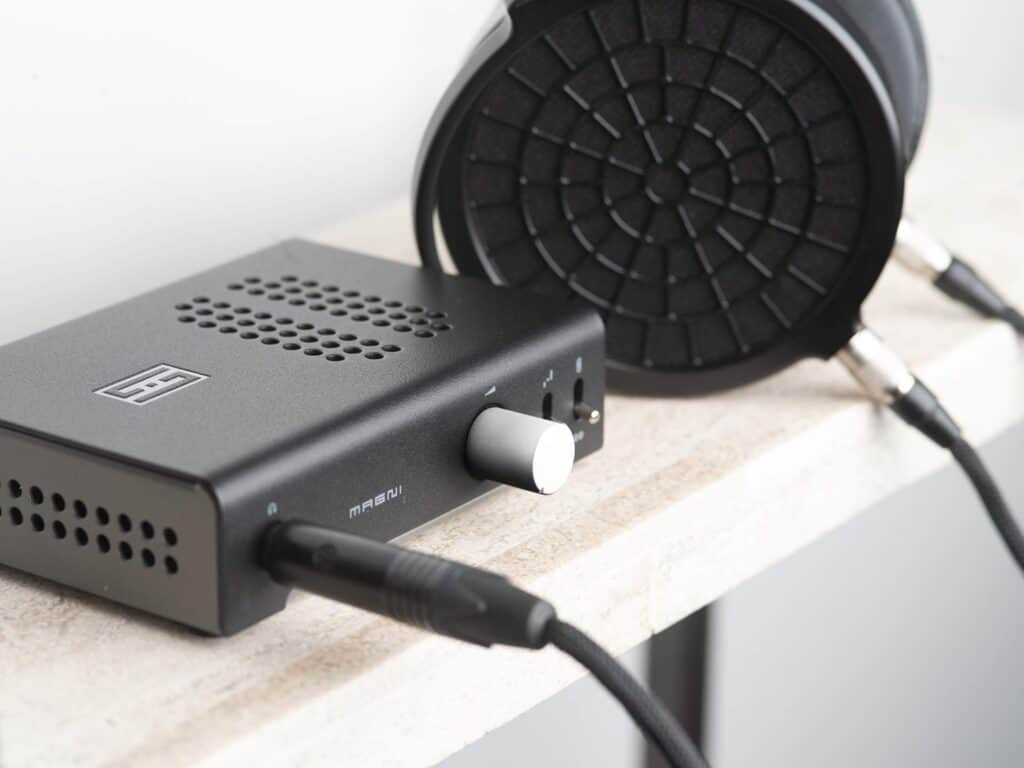
But then you top that with the upgrade possibilities I’ve already mentioned, when cash allows of course, then you have a stunning piece of HiFi design that will prove useful in so many ways. If you want to look at a modern piece of HiFi? Low cost, flexible, packed with value and high in quality? This, my friends, is it.
SCHIIT MAGNI HEADPHONES AMP & DAC
Price: £237, $189 or €289
Website: www.schiit.co.uk
Good: small footprint, basic sound quality, upgrade possibilities, flexible usage
Bad: nothing
RATING: 8
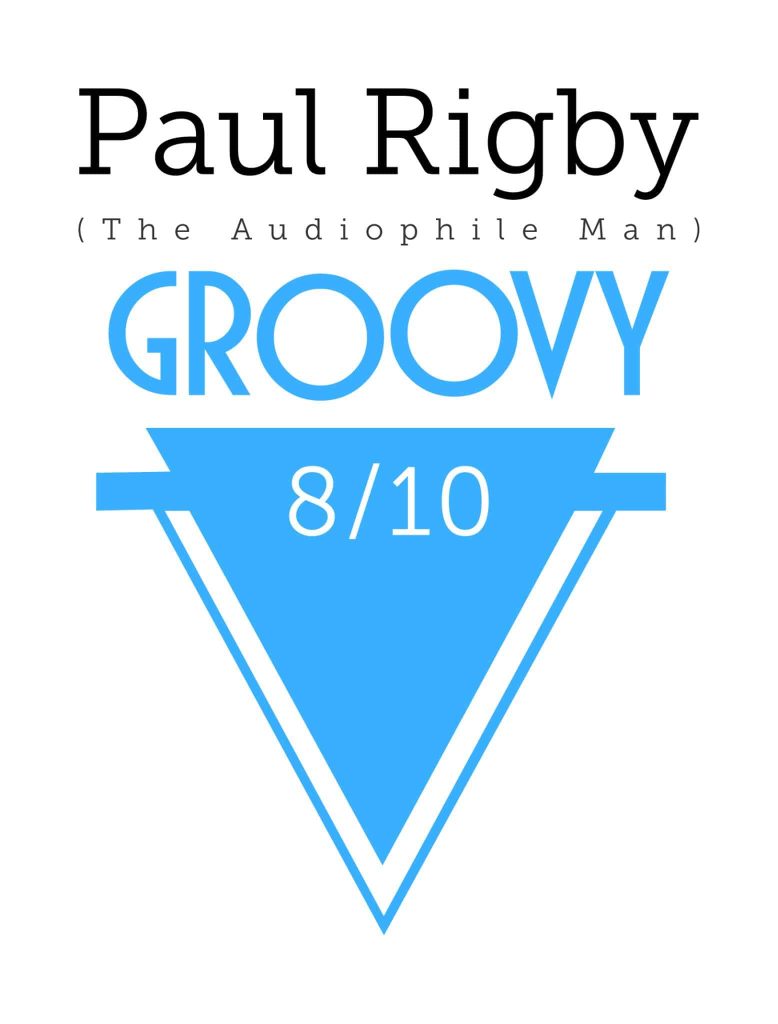
Cambridge 651A integrated amplifier
Icon Audio HP8 Mk.II
Trichord Dino Phono Amplifier
Topping E30 DAC
Audiolab 6000CDT
Tellurium Q cabling
Sendy Aiva Headphones
Blue Horizon Professional Rack System
Harmonic Resolution Systems Noise Reduction Components
Air Audio AC-2K Balanced Transformer


